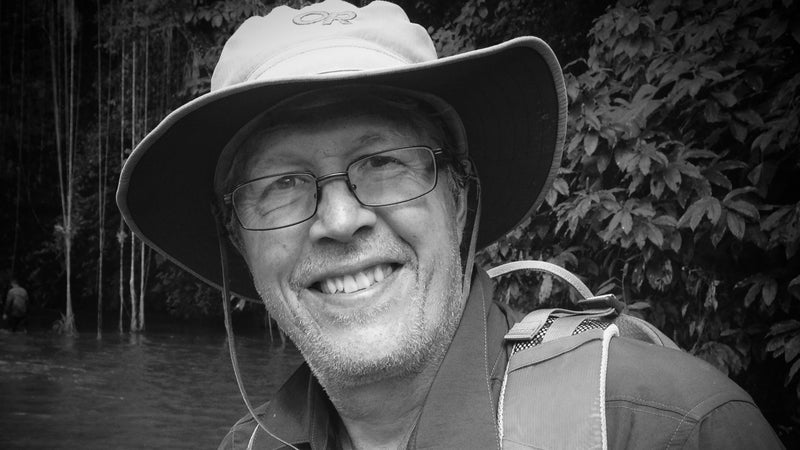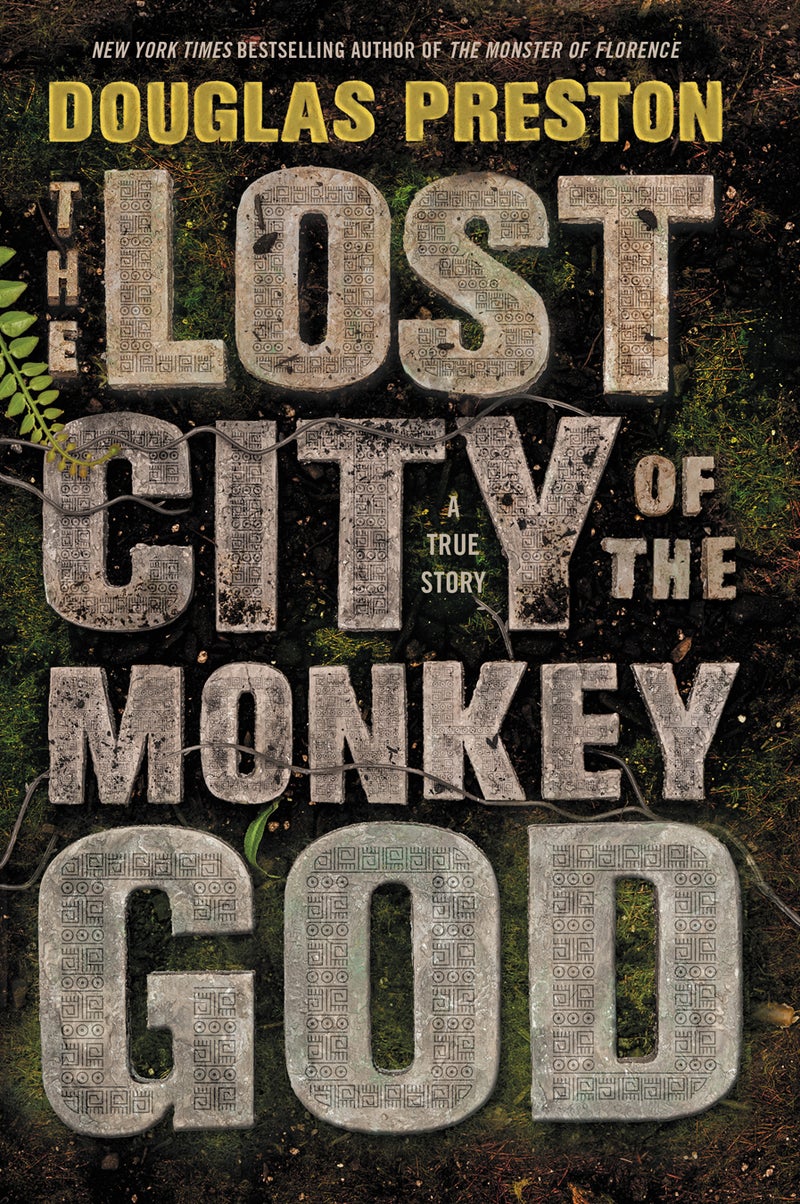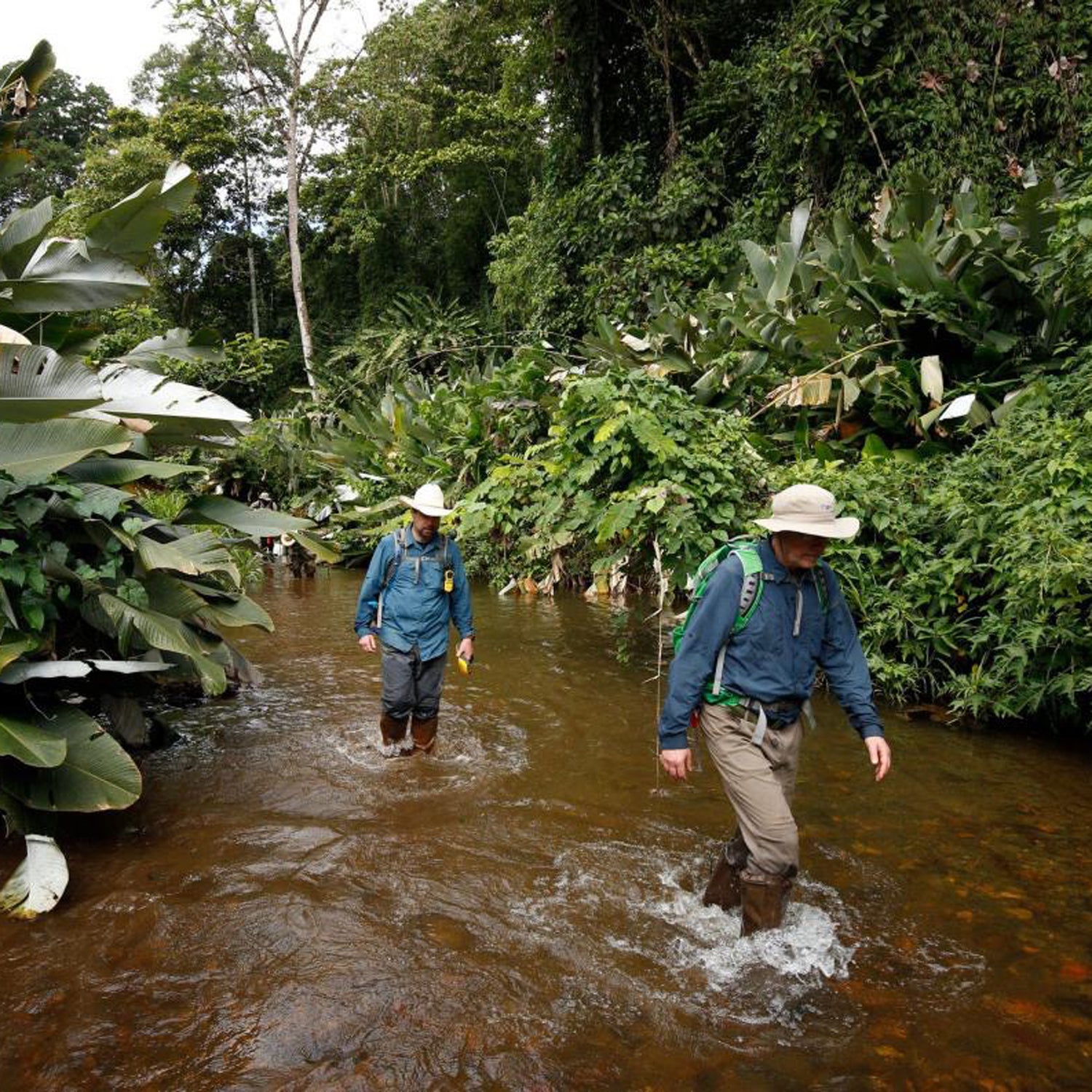In 2015, writer Douglas Preston was on assignment for National Geographic in Honduras, navigating the deep jungle of La Mosquitia with a team using lidar, a . They were searching for the legendary Ciudad Blanca, or White City, where indigenous Hondurans were said to have fled from Spanish conquistadores in the 16th century. Preston’s new book, ($28; Grand Central Publishing), recounts the expedition, which included a team of scientists, researchers, filmmakers, and soldiers. After traveling through a lawless region filled with risks like jaguars and parasitic diseases, they found no evidence of the White City. Instead, what they found were the remains of what was likely a much larger, unique civilization near the edge of the Mayan empire.
We spoke with Preston about the trip and the unexpected ways it affected his life.
OUTSIDE: In your pursuit of Ciudad Blanca, you heard legends that anyone who dared enter the city would fall ill and die. Did those stories frighten you?
PRESTON: I’m not really a superstitious person, and I dismissed the legend that the city was cursed. However, after getting out of the area and becoming ill, it made me think maybe the stories were based in reality. The valley is a terrible hot zone of disease, and that fact may have been the source of the legend of the curse.

In the months after you returned home to Santa Fe, New Mexico, you fell ill from bug bites and were eventually diagnosed with leishmaniasis, one of the deadliest known parasitic diseases in the world. How is your health today?
It took a couple months for the disease to develop. The parasite is flesh eating. It’s truly disgusting. I wouldn’t recommend you Google images of this. The expedition team and I have received the best medical treatment in the world at the National Institutes of Health in Bethesda, Maryland. We’re part of a research project there. The treatment is very difficult and very physically demanding.
Unfortunately, it appears the disease is coming back in me and a couple of others. It’s incurable. It creates a horrible, open ulcer on your skin. That healed up—there’s a big scar on me now—but there are these red nodules again, showing that the parasite is multiplying again. I am going back to the NIH, but I’m essentially in total denial. I feel fine. I feel absolutely physically fit.
Lidar “the greatest archaeological advance since carbon-14 dating.” But your expedition was the first to use the technology for pure exploration—“to look for something nobody could be sure even existed,” as you write.
It wouldn’t have been possible to navigate La Mosquitia without [lidar]. It allowed us to find pristine, untouched sites that hadn’t been looted at all. This is exceedingly rare in archaeology, especially in Central America. We found millions of dollars’ worth of gorgeous artifacts lying on the ground. They were lying where they were left 500 years ago. This ruin is so untouched. It’s like Pompeii. It’s frozen in time.
How can archaeologists use lidar in the future?
Lidar has been used extensively in New Mexico and other places in the United States. The technology is very expensive, though. Once they get to lidaring the Amazon rainforest and the highlands and plains of Colombia, it’s going to be an absolute revelation. They’re going to discover pre-Columbian sites. They are going to understand just how widespread and sophisticated these civilizations were.
In the book, you write, “It was clear to everyone by this point that the White City was a conflation of stories and probably did not exist in its described form.” What exactly did you find in your search for the unknown?
We found that the legend is based on truth. We found important evidence of a very large city that was part of this interesting and mysterious culture that grew up on the Maya frontier but was not actually Maya itself. Throughout history, the incredible, spectacular civilization of the Maya has sucked all the oxygen of the surrounding cultures. This lost culture in Mosquitia became unknown. They don’t even have a formal name, and the archaeology done in this region has been very sparse. There are a lot of lost cities in the Mosquitia rainforests. There’s a lost civilization there.

Who were the people of La Mosquitia?
Here are a people who transformed this very hostile and very unfriendly rainforest environment almost into a Garden of Eden. They built grand plazas and open areas where people could socialize, with great ceremonial architecture. There were huge pathways between houses—houses on mounds so they wouldn’t get flooded. It was quite a wonderful environment. Once the civilization collapsed in the 1600s, everything went back to jungle. Now you walk through and there are trees 20 feet in diameter. You think it’s a virgin rainforest, but it isn’t. Five hundred years ago, it was very different.
After your was published on March 2, 2015, President Juan Orlando Hernandez ordered military personnel to guard the site against looters and promised to stop looters and illegal deforestation. Are those protective measures still in place?
I believe the president still has a small camp of Honduran soldiers protecting the site. This valley is so difficult to get into. The only way to get there is by helicopter, and you’re flying into restricted airspace where you risk getting shot down. Going overland would take weeks. Plus, I don’t know how looters would haul objects on the ground.
Our American civilization feels invulnerable, and yet we are just like all the rest of them. I see many problems in our culture that occurred in the Mayan, Roman, and Greek cultures.
The president also took immediate action to halt and even roll back some of the illegal clear-cutting for cattle grazing. I do think that serious efforts have been undertaken. It’s really complicated. On the one side, you have really poor people trying to make a living. On the other side, you have rich families involved in the illegal land clearing as well.
What did this quest mean for you?
The thing that impressed me personally was to be in a place completely outside the 21st century, so remote that the jaguars and monkeys and other animals hadn’t seen people before. It made me feel really unimportant and superfluous. I had no business being there. I was no longer a homo sapien master. I was just an animal feeling very uncomfortable and one that was in a hostile environment—it didn’t give a shit about me. That’s a good experience every human should have at least once in their life. It knocked some of the ego out of me.
At the time of your trip, Honduras was experiencing political, economic, and cultural turmoil. Gangs and narco traffickers took over large areas of land, leading to the highest murder rate in the world. What did this discovery mean in that context?
I think it’s a long-term benefit on many levels. It’s not right to reduce a country to that level, which the international press has done. Honduras is a beautiful country with warm people, and there’s tremendous potential for tourism and growth. Now Conservation International and various organizations are coming in to try to protect the rainforest. Hernandez hopes it’s a huge economic benefit in terms of tourism. And, as some Hondurans said to me, they don’t have a clear national identity. This discovery shows their pre-Columbian past.
What does the Lost City tell us about current civilizations?
A civilization, in its height, thinks it’s invulnerable. It’s like a teenager who thinks he’s going to live forever. Because of that hubris, the civilization starts on a path that eventually leads to downfall. This has happened again and again.
Our American civilization feels invulnerable, and yet we are just like all the rest of them. I see many problems in our culture that occurred in the Mayan, Roman, and Greek cultures. Some fell more quickly than others. For Mayans, income inequality was a prime factor for the fall of that civilization. Tax avoidance was a prime factor in the fall of the Roman Empire, which essentially went bankrupt. These lessons are all out there. I think the Lost City has a lot of lessons for today, if only we would heed them.


